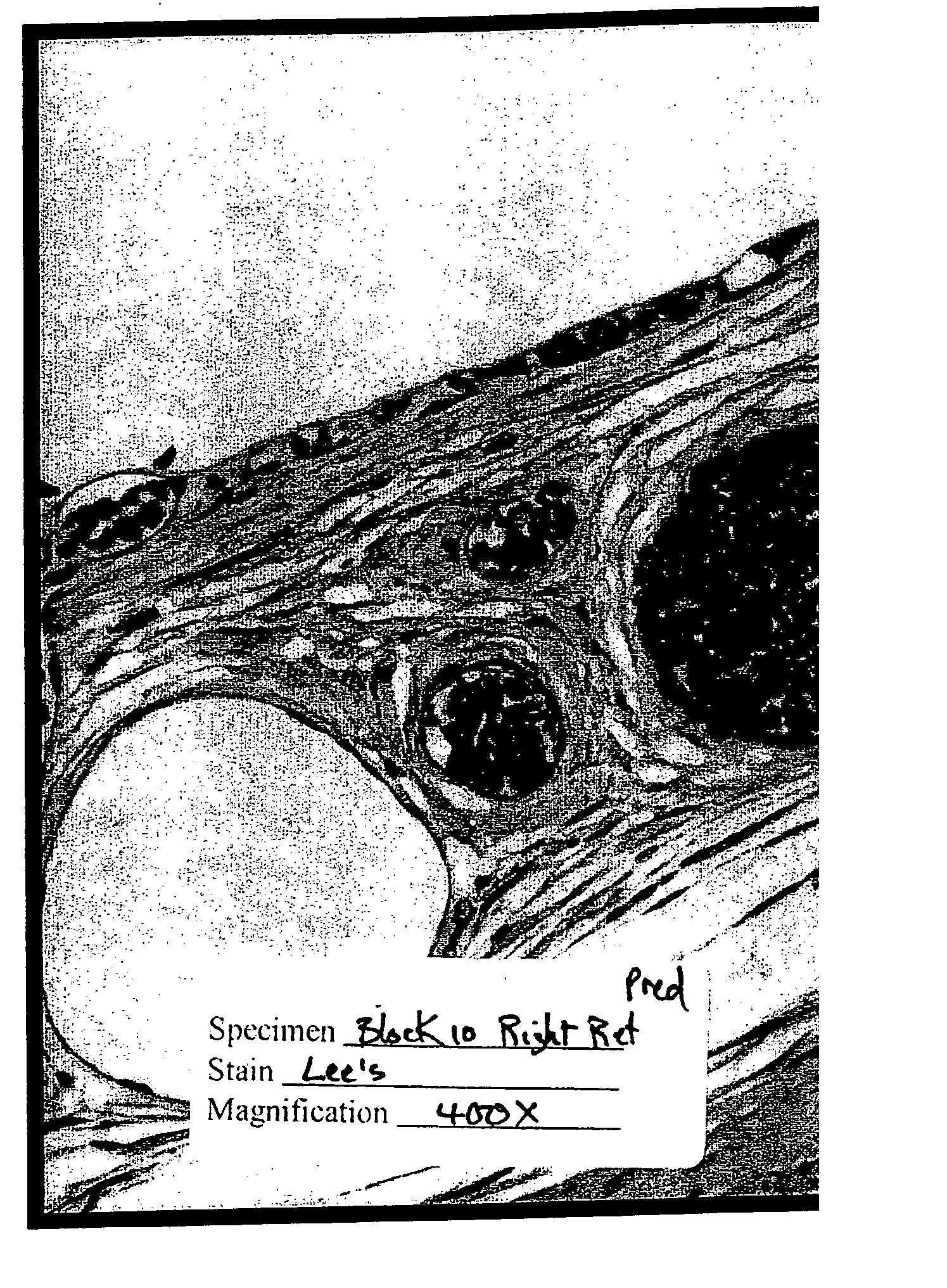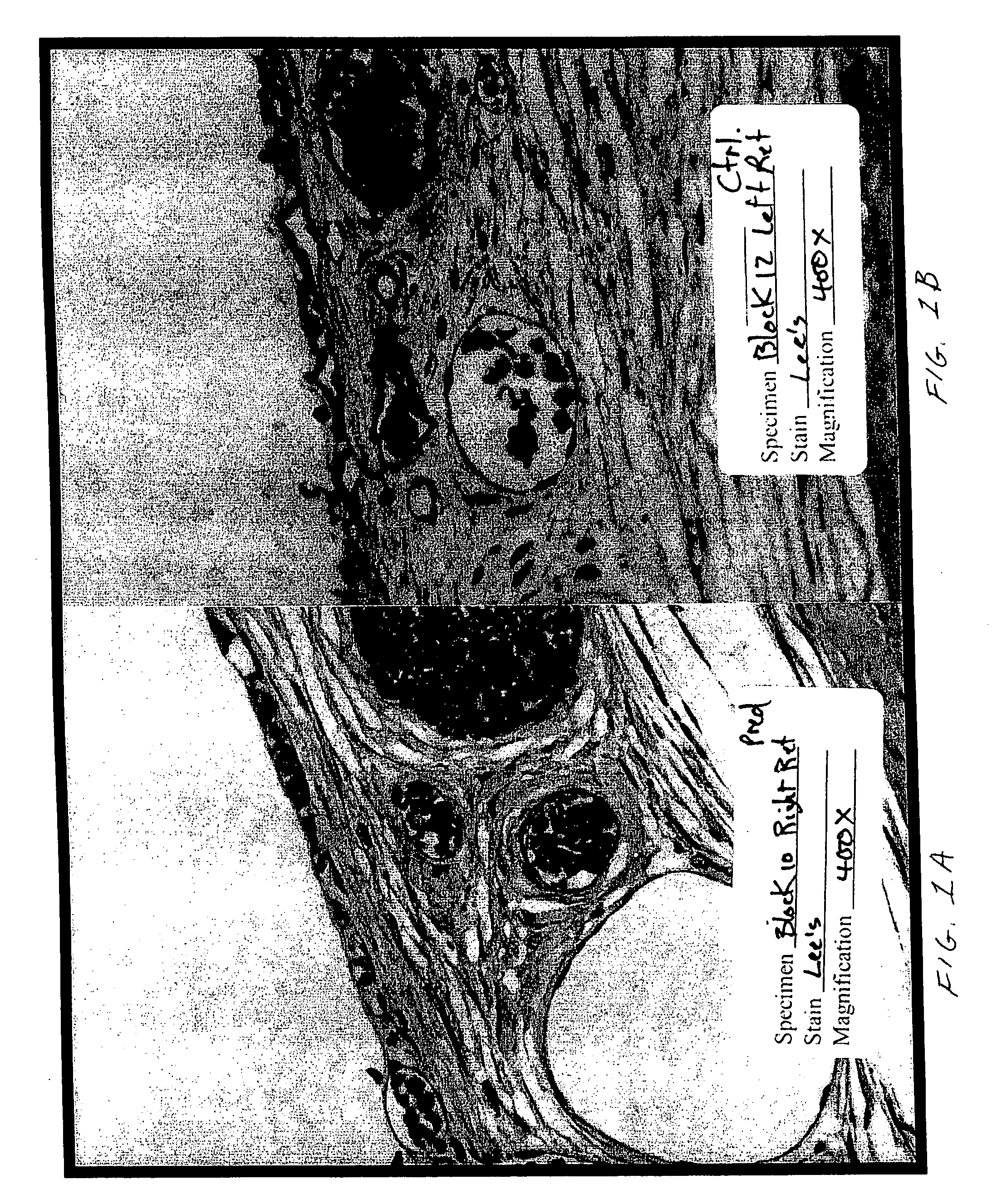Methods and articles for the delivery of medicaments to the eye for the treatment of posterior segment diseases
a technology for the delivery of medicaments and the treatment of diseases of the posterior segment of the eye, which is applied in the field of methods and articles, can solve the problems of difficult delivery of drugs to the posterior segment, high total dose of drugs, and high risk of injury,
- Summary
- Abstract
- Description
- Claims
- Application Information
AI Technical Summary
Benefits of technology
Problems solved by technology
Method used
Image
Examples
example
[0071] To illustrate the ability to deliver a drug to the posterior segment using a hydrogel, an experiment was designed and completed using a contact lens to provide a drug to the retina. New Zealand White rabbits were treated with VEGF in each eye, followed by treatment with prednisolone in one eye, leaving the other as a control. VEGF is known to lead to edema in the retina and prednisolone is known to interfere with this mechanism. The contact lens was a high water ionic polymer lens (SOFTLENS 66, Bausch and Lomb, Rochester, N.Y.) having a water content of about 66%. Each lens had a diameter of about 13 mm.
[0072] Lens Preparation
[0073] Lenses were dessicated according to standard manufacturing procedures. Lenses were soaked at room temperature in a 1 mg / mL aqueous solution of VEGF (Sigma) for a period of 12 hours. Similar lenses were then separately soaked at room temperature in a 1 mg / mL aqueous solution of prednisolone for a period of 12 hours in order to load the lenses wit...
PUM
 Login to View More
Login to View More Abstract
Description
Claims
Application Information
 Login to View More
Login to View More - R&D
- Intellectual Property
- Life Sciences
- Materials
- Tech Scout
- Unparalleled Data Quality
- Higher Quality Content
- 60% Fewer Hallucinations
Browse by: Latest US Patents, China's latest patents, Technical Efficacy Thesaurus, Application Domain, Technology Topic, Popular Technical Reports.
© 2025 PatSnap. All rights reserved.Legal|Privacy policy|Modern Slavery Act Transparency Statement|Sitemap|About US| Contact US: help@patsnap.com


